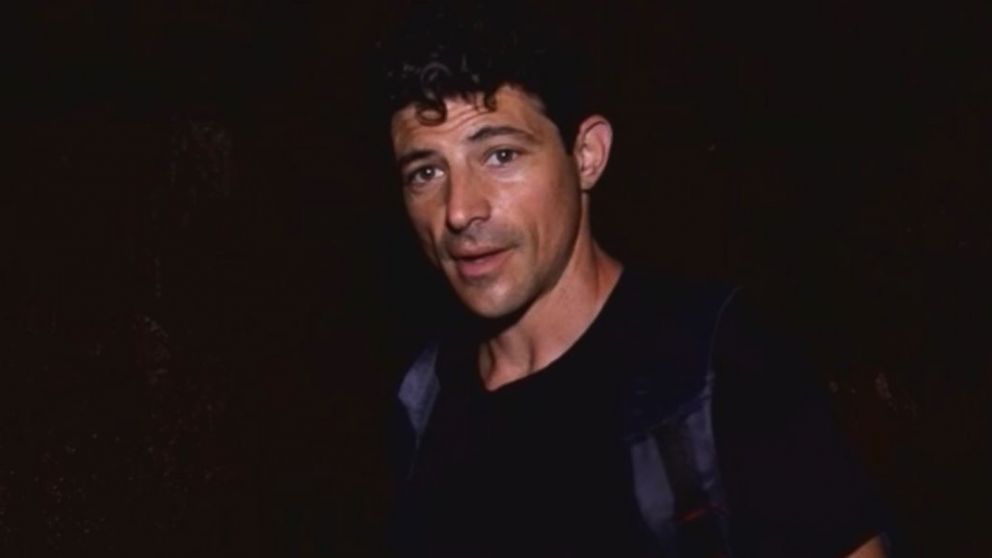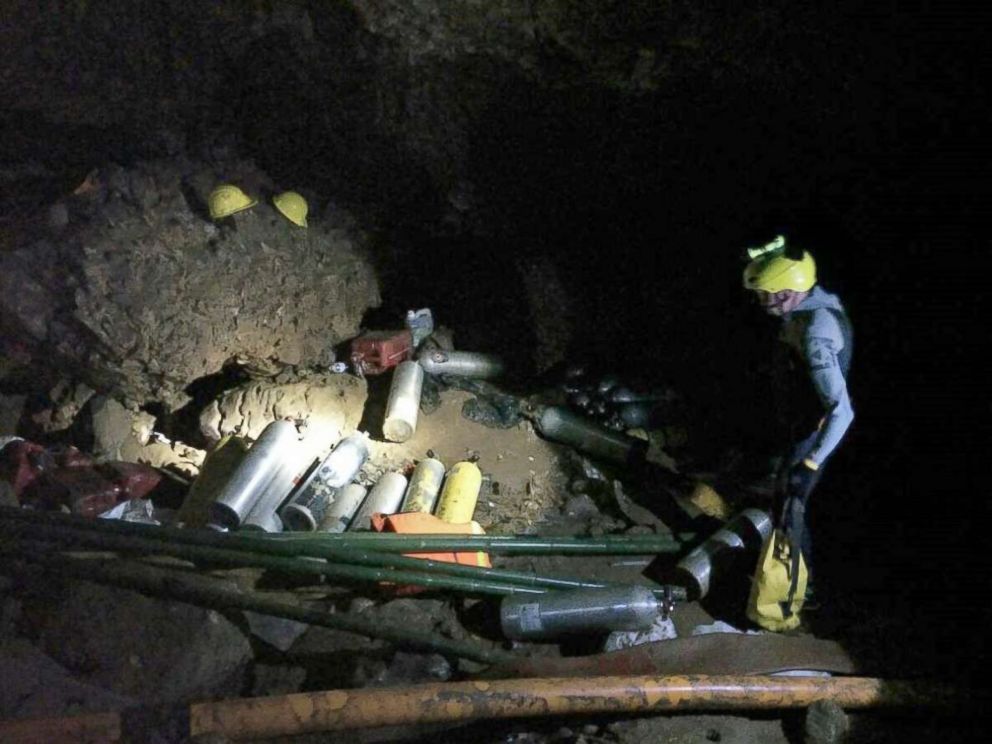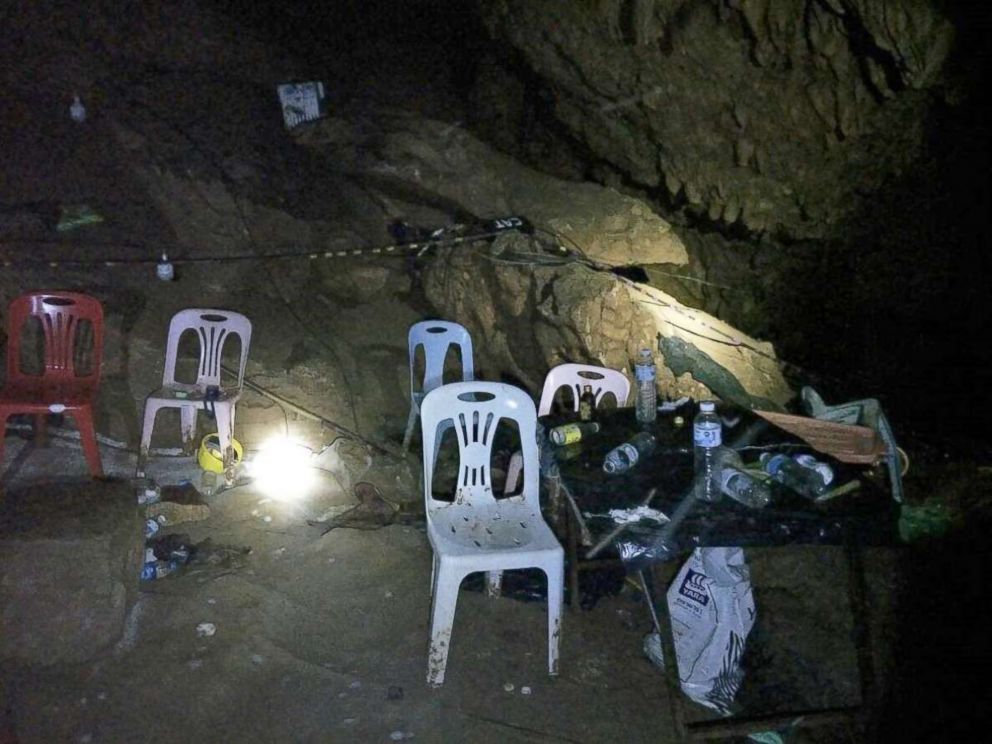Reporter's Notebook: Inside the Thai cave rescue saga that gripped the globe
ABC News' Matt Gutman has written a book on the Thai cave rescue.
When I rendezvoused with Jason Mallinson in Bilbao Spain, I knew only how little I knew.
But what I was about to learn about the globe-gripping rescue of a Thai soccer team from a flooded cave last summer still remains little-known among the general public. It’s why I ended up writing a book about this extraordinary, odds-defying rescue.
Mallinson and I met in a cheerless airport hotel in Bilbao for a breakfast of stale rolls and hard boiled eggs. He’d driven his van filled with customized diving gear from Yorkshire, England, and had I flown the 6,000 miles from Los Angeles (via Madrid) for ABC News' first opportunity to interview one of the four main divers who physically swam the Thai soccer team to safety.
It was only a week after the rescues were completed, but Mallinson was heading south to Spain’s cave diving country on vacation.
Yes, the man who’d spent days nearly two miles deep inside a submerged mountain cave -- diving boys to safety, suffering blisters and infections -- was going cave diving again. He had graciously made that pit stop in northern Spain for us.

The assignment resonated with me for two key reasons. First: like so many folks glued to their TVs, I was a parent of a girl who played soccer and was just a year younger than one of the boys trapped in the cave. I couldn’t imagine what those boys parents went through.
Second: I’ve been fascinated by survival ever since my father was killed in a small plane crash in 1990. For him, that flight was short, rescue was impossible and death came quickly and tragically. But since then, I’ve been fascinated by the ingenuity and resourcefulness of those who fight to survive -- and the people willing to risk everything to rescue them.
That saga that unfolded inside that Thai cave was dramatic on both ends - the stories of both the survivors and the rescuers. There was so much we still didn’t know - the story seemed to me to scream for more in-depth treatment.
The miracle rescue almost didn’t happen
I had arrived in Spain on assignment for ABC News more than a week after the Thai cave rescue, but it was over those rolls and coffee, and in our subsequent on-camera interview -- that we learned the miraculous rescue of the Thai soccer team nearly didn’t happen, and that the divers had braced themselves for many of the boys to die on the way out.
This was an assignment that resonated with me. For as long as I can remember, I’ve been fascinated by survival.
The boys had ventured into the cave for a team-building exercise on June 23rd. It was only ten days later on July 2nd that British divers John Vollanthen and Rick Stanton would find them. The Thai government had worked hard and been willing to try anything to extract them –- finding an as-yet undiscovered alternate entrance to the cave; lower the water table of the entire region by pumping out lakes-worth of water, drilling a 1500 foot relief shaft to them; creating a torturously-long oxygen pumping system to provide them air.
Anything but a dive extraction – which everyone considered too dangerous. But as I learned in my reporting, just days before another major monsoon threatened to close off the cave for months, a USAF Special Tactics team on the ground managed to convince the Thai government to green light a dive rescue. The extraction began on July 8th and lasted through July 10th.
We learned that the Thai Navy Seal divers were not the lead –- that they were not part of the diving portion of the rescue at all; that Mallinson and the other divers had to sedate and re-sedate the boys repeatedly during the perilous rescue operation. If the boys regained consciousness -- they might have panicked – which could have been potentially fatal for both the boys and the divers.
It would take nearly two months of additional reporting to grasp how close to death some of the boys came when the divers hauled them out of the cave one by one, as detailed in the book.
It was Mallinson who also told us, in his thick Yorkshire accent that cuts words short -- “water” sounded like “war” – that a unit of U.S. Air Force (USAF) Special Tactics operators, basically the Air Force’s Seal teams, played such a central role in the rescue.
USAF 353rd Special Tactics Group: Human Swiss Army Knives
Taking Mallinson’s cue, our ABC News 20/20 team set our sights on Okinawa. So instead of flying off to meet one of the rescue effort’s European divers, we flew from Bilbao to Munich to Tokyo, and finally to the Japanese Island of Okinawa –- which decades after World War II continues to bristle with U.S. bases.
One of them is Kadena, a county-sized USAF base that houses the 353rd Special Tactics Group.
So three flights and 36 hours later, we meandered through the base to their command center -- which had the feel of a giant man cave. It’s a converted airplane hanger. Inside there is a 30-foot-high climbing wall, pallets of top of the line outdoor, scuba and military equipment that would make gear-heads salivate. It even had a clubhouse replete with bar.
The USAF’s 353rd Special Tactics Group –- basically the human Swiss army knives of the Air Force, described that consequential meeting to us that they'd had with Thai ministers just 36 hours before the rescue, and the choice that the USAF operators and the lead British divers presented them: agree to a risky rescue dive and “only” about half of the boys will die, or leave them in until the monsoon season ends and they all die.
Most fascinating has been the ingenuity and resourcefulness of those trying to survive and those trying to rescue them, and the power of the human spirit to overcome the impossible.
The decision went all the way to Thailand’s Prime Minister and King. The next day the international divers and the U.S. Special Tactics team finally got the green light for the dive rescue. It was a courageous decision on the part of the Thai leadership, which had been promising the public a “no risk” option –- that every boy would be rescued.
A different kind of challenge
After that 20/20 episode aired on ABC, I got cracking on the book. I arrived back home from Hong Kong after 10 pm on July 28th and that night had my first, two-hour call with Vernon Unsworth, a British national who has been obsessed with that particular Thai cave for the past five years. He was the most recent cave diver to survey it. We spoke for hours. I’d already been interested. I was now hooked.

I had to be. When publisher Lisa Sharkey, a former ABC News senior producer, had reached out to see if I wanted to write the book about a week earlier, the answer was an emphatic “yes.”
When she asked whether I could finish the manuscript by Aug. 20, I was certain it was a typo.
The answer was a less-than-emphatic “maybe?”
Over the next 24 days I packed my family off on our summer vacation without me and I moved into my home office with my dog.
I ate in front of the computer, slept in that room, and kept vampire hours to field and place hundreds of calls to Thailand, Finland, Malta, Belgium, Australia, England, Australia and Japan -- where the subjects of the book lived.
I slept little and wrote until my fingers ached. I left the house only to walk the dog. It was monastic and it was wonderful -- because the subjects of the book opened an entirely new world to me: that of caving and diving, the art of the rescue, the work of the USAF’s 353 Special Tactics groups, and the intricacies of Thai, geography, culture and Buddhism.
I learned about the USAF’s Special Tactics teams, about the unsung bravery and sacrifice of the Thai Navy Seals –- who plunged forward into the cave on near-suicide missions in the initial efforts to find the boys.
World’s best cave divers
Over the many hours we spoke, they revealed things that no one else in the world knew about.
Like the fact that even before they’d discovered the boys nearly two miles into the cave, British divers John Vollanthen and Rick Stanton rescued four Thai pump workers who had been marooned when the cave flooded on June 28th. In the chaos of those early days –- no one even knew they were missing.
They might have died there had the two middle-aged Brits – who happen to be among the world’s best cave divers -- not stumbled upon them. I learned that during the first day of the actual rescue, the divers thought two, maybe three, of the four boys they hoped to rescue that day would die.
So Danish diver Claus Rasmussen wasn’t surprised when after helping one diver and returning to his station at Chamber 8 -- about a mile and a half into the cave -- he found Australian diver and anesthesiologist Richard Harris on the sand spooning one of the boys, and cradling his head so he could keep his airway open.

He wasn’t surprised because they all assumed that some of the boys would succumb when their full facemasks got flooded, or the anesthesia would stop their breathing, or they’d suffer hypothermia. That boy, who calls himself Night, and on whose birthday they’d gone into the cave, survived.
For my father
The book is dedicated to two people: one of them is Saman Gunan, who died while resupplying tanks about 1000 yards into the cave –- in a short dive under circumstances that remain murky.
As revealed in the book, there were mistakes made that may have impacted Gunan’s fate.
The other person is my father, who was killed in a small plane crash in 1990.
For him, rescue was impossible. For as long as I can remember I’ve been fascinated by survival.
It’s one reason we ran the so-called survivor series on “GMA” a few years back, and the reason I’ve covered so many survival stories over the years -- plane crashes, shark attacks, bear attacks, avalanches, tornadoes, hurricanes earthquakes.
Most fascinating has been the ingenuity and resourcefulness of those trying to survive and those trying to rescue them, and the power of the human spirit to overcome the impossible.
ABC News chief national correspondent Matt Gutman is the author of the upcoming book, "The Boys in the Cave: Deep Inside the Impossible Rescue in Thailand."






